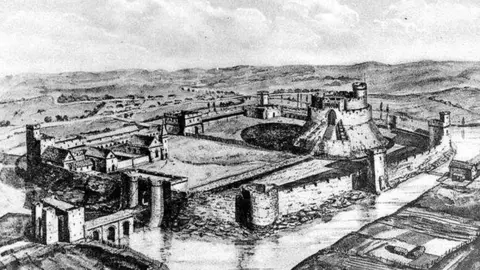Sheffield Castlegate: Virtual model of castle created
 University of Sheffield
University of SheffieldA virtual model showing "unprecedented detail" of a castle where Mary Queen of Scots was imprisoned has been created by computer scientists.
The model has been generated after excavation work unearthed parts of Sheffield Castle which had been covered for centuries.
A series of trial trenches were dug in previously uninvestigated areas where the castle once stood.
The virtual model is on show at the Millennium Gallery in Sheffield.
The dig, said to be the first comprehensive survey of the city's Castlegate site, is part of a £786,000 council scheme to revamp the area.
Mary Queen of Scots was imprisoned at Sheffield Castle and Manor Lodge for 14 years in the 1500s under the care of the Earl of Shrewsbury.
Castlegate is the oldest part of Sheffield and has been inhabited since at least the 11th Century.
 University of Sheffield
University of SheffieldThe castle was destroyed in 1648 and its remains were covered by Castle Market in the 1960s, with the only visible parts locked in basements.
The virtual model has been developed by creative agency Human and computer scientists from the University of Sheffield.
Prof Dawn Hadley said: "Sheffield Castle was almost completely destroyed during the English Civil War and most of what does remain of its original structure has been hidden away from the public for hundreds of years.
"This is one of the main reasons why the castle and its history are largely unknown.
 Picture Sheffield
Picture Sheffield"But now we hope that with the creation of this augmented reality experience people will be able to see the castle in all of its glory and learn more about its fascinating history."
University archaeologists said the castle was once one of the grandest and most powerful in the north of medieval England.
"It was home to some of the great families of the time - including the de Furnivals, Nevils, Shrewsburys and Howards."
